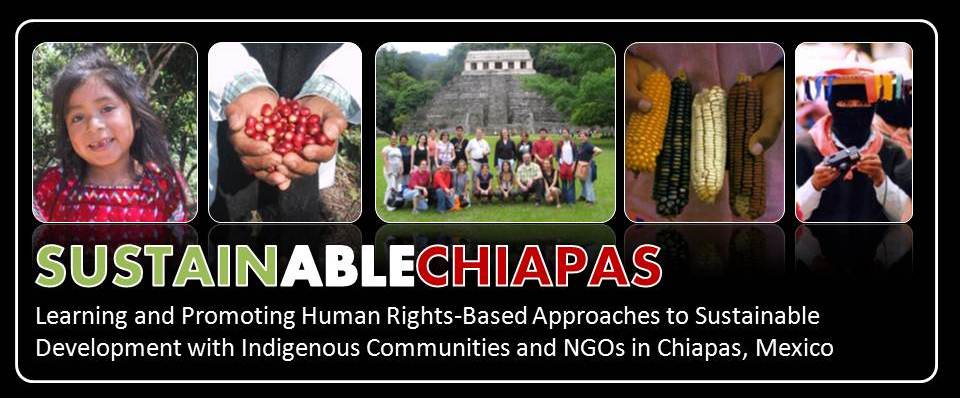
Within the first day of my stay in San Cristobal de las Casas I was drawn to the number of indigenous women selling items from common trinkets to unique weavings along the streets or in the square or marketplace. They seemed to be on every street we ventured down. As soon as they would see us, they would gather up their items and come, with open arms to offer their products for sale. At first, this seemed slightly annoying, but throughout the week, their persistence made me take particular notice of them. What surprised me most was how every woman seemed to be selling the exact same items. I wondered to myself why individuals did not diversify or specialize to create a unique market niche within a highly touristic town?
As we continued to study various indigenous groups in the area, especially the role of women, I realized the answer to my question had far less to do with the individual than with the community. Visiting various women’s cooperatives, we could see how important weaving is to shaping identity for indigenous women. It is a skill that strengthens family bonds as mothers teach their daughters and is a skill that revolves around the home. Weaving is a part of daily activities and household chores for women formally involved in cooperatives like Jolom Mayaetik and Kinal Antsetic. As Greenfield, Maynard and Childs also documented in their article about indigenous culture and learning, weaving is connected to identity in that which tribe a woman belongs to also influences what she weaves as different groups have different traditional patterns and colors. What they make is completely wrapped up in who they are. Therefore, it is only natural that they all sell similar products as it is so ingrained within their communal identity.
In addition to the same products in the market and along the streets, I was also struck at how many women were selling items. However, there presence is evidence of their social progress after the 1994 Zapatista uprising. According to Collier and Quaratiello, and as explained on our walking tour, the culture is more tolerant to an increased indigenous presence since the uprising. This is most likely due to the indigenous community taking a stand and the international interest and subsequent tourism that followed. There was also a financial incentive for the rest of Chiapan society to tolerate the growing indigenous presence from the new interest in Chiapas. So while it seems like there is significant competition among indigenous women to sell their products, their increased attendance in the market and along the streets is a sign of development. There is still discrimination, but this shows how their community activism is taking steps toward social justice, which is a significant step for sustainable development.
Even though at first glance indigenous women selling in the market may seem like a poor thought-out economic strategy, it really goes deeper than just a means to making a living. It is a strong reminder that different cultural nuances and practices have layers and reasons to why they exist. A woman’s identity in her products and the political undertones to the number of vendors are only two components to the indigenous market vendors in San Cristobal, and the indigenous women’s role is just one aspect of Chiapan culture that we were able to glimpse during the trip.

Sources and Further Reading
Collier, George A., and Elizabeth Lowery Quaratiello. 1999. Chiapas and Mexico. Pp. 15-36 (Chap. 1) in Basta!: Land and the Zapatista Rebellion in Chiapas. Oakland, CA: Food First Books.
Greenfield, Patricia, Ashley E. Maynard, and Carla P. Childs. 2000. History, Culture, Learning, and Development. Cross-Cultural Research 34 (4): 351-374.
Jolom Mayaetik website http://www.jolom-mayaetik.org/
Kinal Antsetic website http://kinal.laneta.apc.org/kinal.htm
Collier, George A., and Elizabeth Lowery Quaratiello. 1999. Chiapas and Mexico. Pp. 15-36 (Chap. 1) in Basta!: Land and the Zapatista Rebellion in Chiapas. Oakland, CA: Food First Books.
Greenfield, Patricia, Ashley E. Maynard, and Carla P. Childs. 2000. History, Culture, Learning, and Development. Cross-Cultural Research 34 (4): 351-374.
Jolom Mayaetik website http://www.jolom-mayaetik.org/
Kinal Antsetic website http://kinal.laneta.apc.org/kinal.htm
By Jamelyn Lederhouse
